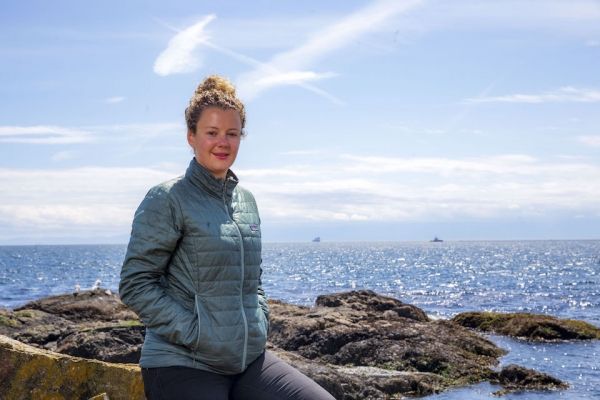Large vessel traffic in the Boundary Pass shipping lanes, on the east side of Saturna Island, has been steadily increasing for decades—and the impact on endangered southern resident killer whales (SRKW) is causing considerable concern. UVic marine biologist and coastal geographer Lauren McWhinnie is now looking at how we can also reduce noise pollution from small vessel traffic on this population of whales.
“We know that globally the noise from shipping traffic alone has almost doubled every decade,” says McWhinnie. “Our goal now is to stop increasing noise levels in the SRKW’s key feeding areas.”
For the past four years McWhinnie has been monitoring the growing volume of small boat traffic in key whale foraging sites using three forms of data collection: Automatic Identification System (AIS) receivers, hydrophones (underwater listening devices) and land-based cameras.
These systems shed light on the presence of previously unaccounted-for types of vessel traffic and the time these boats spend in an area, which is important for informing management actions and noise assessment modelling.
Continue reading at University of Victoria.
Image via University of Victoria.


